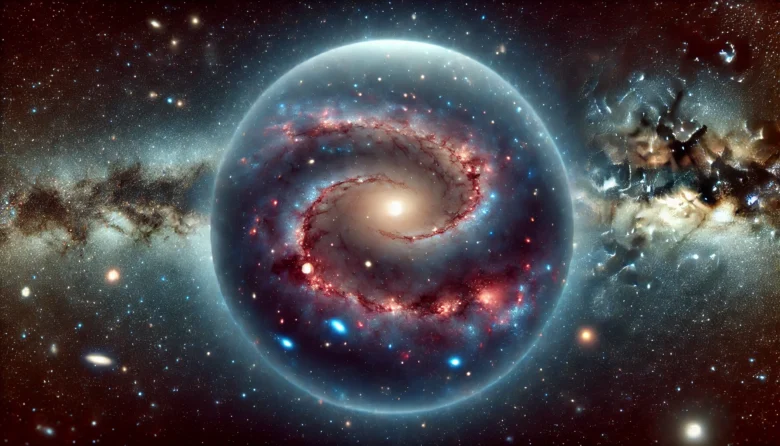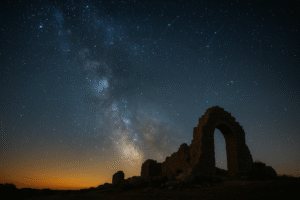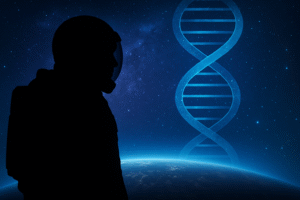Imagine tuning your radio to a station, only to hear a persistent hiss in the background. This hiss isn’t just static—it’s the ancient echo of the universe itself, a remnant from a time when the cosmos was still in its infancy. This whisper from the past is known as the Cosmic Microwave Background (CMB) Radiation, and it holds the key to unlocking some of the deepest mysteries of the universe. In this blog, we’ll dive into the fascinating origins of the CMB, tracing its journey from the fiery beginnings of the cosmos to the chilly, expansive universe we know today.
The Big Bang: The Birth of the Universe
To understand the origins of the Cosmic Microwave Background Radiation, we need to rewind the cosmic clock to the very beginning—the Big Bang. Around 13.8 billion years ago, the universe was born from an unimaginably hot and dense point. This event, known as the Big Bang, marked the start of everything: space, time, matter, and energy. In the earliest moments following the Big Bang, the universe was a seething soup of subatomic particles, a chaotic mixture of protons, neutrons, and electrons all interacting with intense radiation.
The Formation of the CMB: A Light from the Past
For the first 380,000 years after the Big Bang, the universe was too hot for atoms to form. Instead, it was filled with a plasma of charged particles, where photons (light particles) were constantly scattered by these particles, unable to travel far. This period is often referred to as the “opaque” era because light couldn’t travel freely.
As the universe expanded, it also cooled. Eventually, it reached a temperature where protons and electrons could combine to form neutral hydrogen atoms. This process, known as “recombination,” allowed photons to finally travel unhindered through space. The moment these photons were released marks the origin of the Cosmic Microwave Background Radiation. What was once a blazing hot radiation cooled as the universe expanded, stretching the wavelength of the light into the microwave region of the electromagnetic spectrum, where it remains detectable today.

The Discovery of the CMB: A Serendipitous Find
Fast forward to 1965 in Holmdel, New Jersey, where two scientists, Arno Penzias and Robert Wilson, were working at Bell Telephone Laboratories. They were attempting to eliminate noise from a radio receiver designed for satellite communication. No matter how hard they tried, they couldn’t get rid of a persistent background hiss. They even cleaned out some pigeons and their droppings from the antenna, thinking that might be the cause!
What they had stumbled upon, unknowingly, was the Cosmic Microwave Background Radiation. Their discovery provided the first tangible evidence of the Big Bang theory, supporting the idea that the universe had indeed started from a hot, dense state and had been expanding ever since. This discovery earned them the Nobel Prize in Physics in 1978.
Why the CMB Matters: Peering into the Early Universe
The Cosmic Microwave Background Radiation is like a photograph of the infant universe, a snapshot taken when the cosmos was just 380,000 years old. By studying the CMB, scientists can gain insights into the conditions of the early universe, including its temperature, density, and rate of expansion.
One of the most significant revelations from CMB studies is the understanding of the universe’s large-scale structure. The tiny fluctuations in temperature within the CMB, seen as slight variations in the intensity of the radiation, correspond to the seeds of galaxies and clusters of galaxies we see today. These fluctuations were the result of quantum fluctuations in the very early universe, which were stretched to cosmic scales by the process of inflation—a rapid expansion that occurred a fraction of a second after the Big Bang.
Modern Observations: Mapping the CMB
Over the decades, several missions have mapped the Cosmic Microwave Background Radiation in greater detail. One of the most notable missions was the Wilkinson Microwave Anisotropy Probe (WMAP), launched by NASA in 2001. WMAP provided a detailed map of the CMB, allowing scientists to measure the age, composition, and curvature of the universe with unprecedented accuracy.
More recently, the European Space Agency’s Planck satellite, launched in 2009, took the study of the CMB to new heights. Planck’s observations have confirmed and refined previous measurements, providing a more detailed picture of the universe’s early conditions and contributing to our understanding of dark matter and dark energy, the mysterious components that make up most of the universe.
The CMB and the Future of Cosmology
The Cosmic Microwave Background Radiation continues to be a focal point in cosmological research. It holds the potential to answer some of the most profound questions in science, such as the nature of dark matter and dark energy, and the ultimate fate of the universe. As our observational tools and techniques improve, the CMB will likely reveal even more secrets about the universe’s beginnings and its long-term evolution.
Conclusion
The Cosmic Microwave Background Radiation is more than just a faint signal from the distant past; it’s a cosmic time capsule, preserving the story of the universe’s birth and evolution. From its origins in the fiery aftermath of the Big Bang to its discovery by chance in the 20th century, the CMB has played a crucial role in shaping our understanding of the cosmos. As we continue to explore this ancient light, we are not just looking back in time—we are also peering into the future, seeking answers to the greatest mysteries of existence.
So next time you hear static on the radio, remember—you might just be listening to the oldest sound in the universe.
Author’s Note
The story of the Cosmic Microwave Background Radiation is a reminder of how even the faintest signals can carry profound truths. As we continue to study the universe, we’re not only learning about the cosmos but also about our place within it.
G.C., Ecosociosphere contributor.
References and Further Reading
- NASA’s Cosmic Microwave Background Overview
- Neil deGrasse Tyson Explains the Science Behind How High | Full Stop. https://www.full-stop.net/2014/11/14/blog/jett/neil-degrasse-tyson-explains-the-science-behind-how-high/
- What the Webb Telescope’s ‘Universe breaker’ galaxies can tell us about the early cosmos | BBC Sky at Night Magazine. https://www.skyatnightmagazine.com/space-science/webb-telescope-universe-breaker-galaxies/
- I have a problem visualizing the cosmological “dark ages.” Why was everything dark?. https://www.astronomy.com/science/i-have-a-problem-visualizing-the-cosmological-dark-ages-why-was-everything-dark/
- A Universe that begins again. https://cosmosmagazine.com/science/physics/new-model-of-the-cosmos-a-universe-that-begins-again/
- Beyond Linear Time: How The Future May Influence The Past, And Other Evidence-Based Theories – The Intellectualist. https://theintellectualist.com/beyond-linear-time-how-the-future-may-influence-the-past-and-other-evidence-based-theories/
- Cosmic Spiderwebs: Understanding the Cosmic Microwave Background Radiation. https://www.theteachingastrophysicist.com/post/cosmic-spiderwebs-understanding-the-cosmic-microwave-background-radiation
- Buckingham, L., & Ashby, B. (2022). Coevolutionary theory of hosts and parasites. https://doi.org/10.5281/zenodo.5833733
- Dealing with Creationism in Astronomy: Physics, Astronomy & Other Reading Resources. https://dealingwithcreationisminastronomy.blogspot.com/p/physics-astronomy-other-reading.html





Comments
Your writing has a way of resonating with me on a deep level. It’s clear that you put a lot of thought and effort into each piece, and it certainly doesn’t go unnoticed.